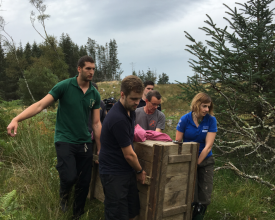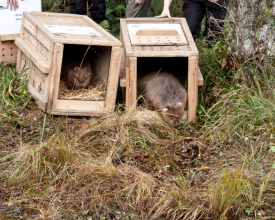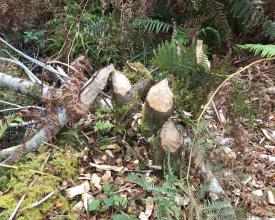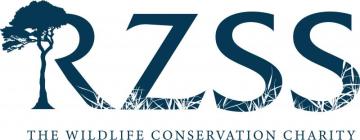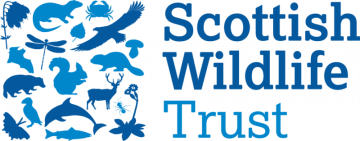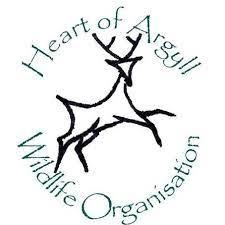
Castors à Knapdale : Projet de renforcement des castors écossais
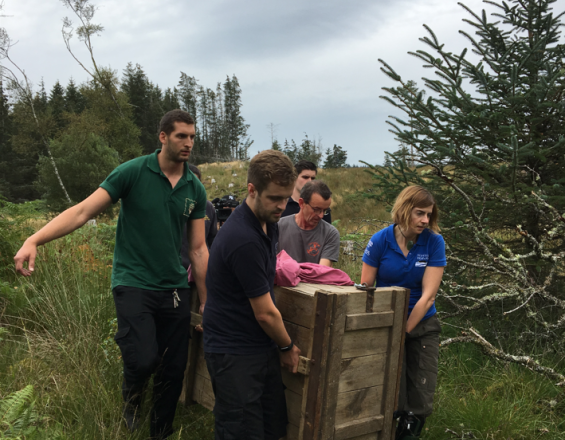
Le castor eurasien(Castor fiber) a disparu de la Grande-Bretagne continentale depuis le XVIe siècle. Le Scottish Beaver Trial a été le premier projet de réintroduction de mammifères autorisé au Royaume-Uni, établissant une population de castors d'origine norvégienne dans la forêt écossaise de Knapdale. Cependant, la population était peu nombreuse et sa faible diversité génétique la menaçait de disparition. Le projet de renforcement des castors écossais a été conçu pour atténuer ce risque. À la suite d'une vaste consultation publique et d'un échantillonnage génétique, le projet a permis de relâcher 21 castors d'origine bavaroise présentant une diversité génétique plus importante et différente dans la forêt de Knapdale entre 2017 et 2020. Le renforcement a été un succès, la surveillance ultérieure ayant révélé une augmentation de la reproduction et l'occupation de nouveaux lochs. En outre, l'échantillonnage génétique a révélé une diversité génétique nettement plus élevée dans la population qu'avant le transfert, ce qui a amélioré la résilience de la population. Le projet a servi de modèle pour d'autres translocations et a contribué à la stratégie écossaise sur les castors pour la période 2022-2045.
Contexte
Défis à relever
Défis environnementaux
- La faible diversité génétique d'une population fondatrice de 16 castors descendant tous de la même population en Norvège, avec des impacts négatifs potentiels sur la résilience.
- Minimiser les impacts potentiels sur le bien-être des conflits territoriaux entre les animaux résidents et les nouveaux animaux.
- Minimiser les impacts sur le bien-être liés au processus de translocation et à l'établissement sur le site de lâcher.
- Risque d'introduire le castor nord-américain plutôt que l'espèce eurasienne, et tout lâcher non autorisé.
- Risque de consanguinité en raison de la présence d'un couple père-fille dans l'une des familles fondatrices.
- Risque de propagation d'agents pathogènes et de maladies (Girling et al. 2019).
- Piégeage d'individus/de groupes familiaux pour les translocations.
Défis sociaux
- Polarisation entre les groupes de parties prenantes.
- Les gens manipulent les pièges dans la région de Tayside (problème résolu grâce à une signalisation/un étiquetage clairs).
- S'assurer que les licences correctes ont été obtenues.
- Knapdale a été sélectionné comme étant peu conflictuel, la plupart des gens sont positifs mais certains pêcheurs sont opposés au renforcement.
Emplacement
Traiter
Résumé du processus
1) Une fois le problème identifié, la population source de renforts pourrait alors être identifiée.
2) Une fois la population source sélectionnée, les procédures de piégeage, de déplacement et de dépistage des maladies ont pu être établies avant le transfert.
3) Après le transfert, les castors ont été suivis afin de déterminer le degré de réussite du projet.
4) Cet élément a permis de déterminer s'il était nécessaire de réitérer ou d'adapter les autres éléments.
Blocs de construction
1. Identification de la faible diversité génétique et de la petite taille de la population de castors de Knapdale.
L'objectif de ce bloc était de comprendre la probabilité de disparition de la population et l'ampleur du renforcement nécessaire. Une étude a été menée en 2016 pour déterminer la taille de la population de castors de Knapdale et l'emplacement de chaque individu. RZSS WildGenes a mesuré la diversité génétique de la population de Knapdale à l'aide d'un panel de marqueurs génétiques à haute densité.
Facteurs favorables
L'expertise de l'équipe RZSS WildGenes et les ressources et l'expertise nécessaires à la collecte des données.
Leçon apprise
Les translocations de conservation nécessitent des données génétiques avant de procéder aux translocations, dans la mesure du possible, afin d'éviter les problèmes abordés par cette solution.
2. Identifier les sources de castors supplémentaires à utiliser pour renforcer la population.
L'objectif de ce bloc était de s'assurer que les castors sélectionnés pour le renforcement étaient aptes à être transférés vers un nouveau site et qu'ils étaient d'origine correcte (bavaroise) afin de garantir l'introduction de nouveau matériel génétique par le biais du renforcement.
Facteurs favorables
La coopération et les bonnes relations avec les propriétaires terriens de Tayside et les détenteurs privés de castors. L'équipe RZSS WildGenes pour établir l'origine bavaroise des castors.
Leçon apprise
Certains propriétaires fonciers sont restés négatifs à l'égard des castors même après l'élimination des castors pour la translocation et certains sites de capture par translocation dans les zones de conflit ont été recolonisés par les castors. Ainsi, l'élimination par translocation n'est pas toujours une solution efficace au conflit entre le castor et la faune humaine et il est nécessaire d'investir davantage dans des mesures d'atténuation afin de permettre aux propriétaires terriens de vivre avec les castors.
3. Translocation de castors supplémentaires dans la Knapdale pour renforcer les populations
L'objectif de ce bloc était de s'assurer que chaque castor était relâché selon les meilleures pratiques, en maximisant son bien-être et ses chances de survie. Les castors à relâcher ont reçu un numéro d'identification individuel, ont fait l'objet d'un examen de santé complet par l'équipe vétérinaire du RZSS et ont subi des prélèvements sanguins pour confirmer génétiquement qu'ils étaient eurasiens(Castor fiber) et non nord-américains(C. canadensis). Les castors ont été relâchés dans des lochs connus pour être vacants, soit seuls, soit par paires, soit en groupes familiaux. Après chaque lâcher, l'emplacement a été vérifié 24 heures plus tard, puis un relevé des signes sur le terrain a été effectué six semaines après le lâcher. Chaque loch relâché a également été surveillé pendant six semaines entre le lâcher et la surveillance des signes sur le terrain à l'aide de pièges photographiques.
Facteurs favorables
Le partenariat de RZSS qui, en tant qu'organisation de conservation basée sur un zoo, a été en mesure d'apporter les compétences et l'expertise cumulées des vétérinaires, des gardiens, des généticiens et des scientifiques spécialisés dans la réintroduction. SWT s'est engagé auprès du gouvernement pour l'obtention d'une licence.
Leçon apprise
Les transferts sont des situations dynamiques pour lesquelles l'adaptabilité et la flexibilité sont essentielles. Les animaux peuvent arriver à l'improviste, ce qui nécessite des personnes en attente tout au long de l'opération et mobilise beaucoup de ressources.
4. Suivi post-lâcher et suivi génétique
L'objectif de ce bloc était d'évaluer l'efficacité du renforcement. Des relevés de signes sur le terrain de tous les plans et cours d'eau de Knapdale ont été effectués tous les six mois, parallèlement au piégeage par caméra. En outre, un effort intensif de capture et d'échantillonnage a été mené en 2019 pour aider à établir le succès de la reproduction et, en 2020, une enquête a été menée pour étudier toute expansion potentielle des castors en dehors de Knapdale. L'équipe WildGenes de RZSS a mesuré la diversité génétique de la population de Knapdale après le lâcher, en la comparant à la diversité génétique avant le lâcher.
Facteurs favorables
L'expertise de RZSS, la coopération de Forestry and Land Scotland et l'assistance de Heart of Argyll Wildlife Organisation.
Leçon apprise
Il aurait été bénéfique d'utiliser des drones pour obtenir des images du site de lâcher avant et après la translocation. Cela aurait été un excellent moyen de suivre la transformation de l'environnement par les castors.
Impacts
Le projet de renforcement a permis d'accroître la population jusqu'à environ 25 individus en 2020, avec l'établissement de six nouveaux groupes familiaux, améliorant ainsi la viabilité et la résilience de la population.
Trois des quatre objectifs du projet ont été atteints. Premièrement, les castors ont été relâchés dans la majorité des points appropriés de la Knapdale. Deuxièmement, deux couples supplémentaires se sont établis et se sont reproduits en conséquence directe du renforcement en 2020. Troisièmement, la population globale a atteint un minimum de cinq couples reproducteurs ou groupes familiaux. Le quatrième objectif, à savoir l'établissement d'un couple norvégien-croisé-bavarois, nécessitera un suivi génétique à long terme afin d'en assurer la réussite. S'ils sont établis, ces accouplements offriront un réservoir génétique unique que l'on ne trouve nulle part ailleurs au Royaume-Uni (ou peut-être nulle part en Europe) et qui pourrait être précieux pour de futures translocations au Royaume-Uni.
En outre, en fournissant la plupart des castors pour le renforcement dans la région de Tayside, le projet a contribué à résoudre les conflits entre l'homme et la faune sauvage dans cette région, entre les propriétaires terriens et les castors relâchés sans autorisation.
Nous pensons que le renforcement, grâce à l'augmentation de la construction de barrages, augmentera l'effet de la population de castors sur l'hydrologie de Knapdale, améliorant ainsi la gestion des inondations dans la région. Nous prévoyons également des impacts positifs sur la biodiversité locale, car les castors peuvent augmenter la richesse des espèces végétales (Willby et al. 2018) et fournir un habitat à de nombreux taxons écossais (Stringer et Gaywood, 2016).
Bénéficiaires
Primaire : population de castors - augmentation de la taille et de la diversité génétique, amélioration de la viabilité à long terme, modèle pour de futures translocations au Royaume-Uni (profite à d'autres castors).
Secondaires : écosystèmes locaux, communauté locale (augmentation du tourisme), communauté scientifique.
Objectifs de développement durable
Histoire
Helen Taylor, Conservation Programme Manager, RZSS : J'ai rejoint le projet castor écossais pour les deux dernières années du renforcement. Avant ce projet, j'avais surtout travaillé avec des oiseaux, et principalement à l'étranger. De retour en Grande-Bretagne pour la première fois depuis dix ans, j'ai été ravie d'avoir la chance de participer à un projet de translocation aussi passionnant et progressif. Apprendre à connaître les castors et leur rôle en tant qu'ingénieurs de l'écosystème, voir les impacts positifs qu'ils peuvent avoir sur un paysage en temps réel, et apprécier les complexités des conflits entre l'homme et la faune pour une espèce qui est réintroduite après 400 ans, a été une opportunité incroyable en tant que professionnel de la conservation. Ce qui est encore mieux, c'est qu'en raison du succès de la réintroduction, je peux continuer à visiter le site de réintroduction et voir comment il continue à changer grâce au retour des castors.
